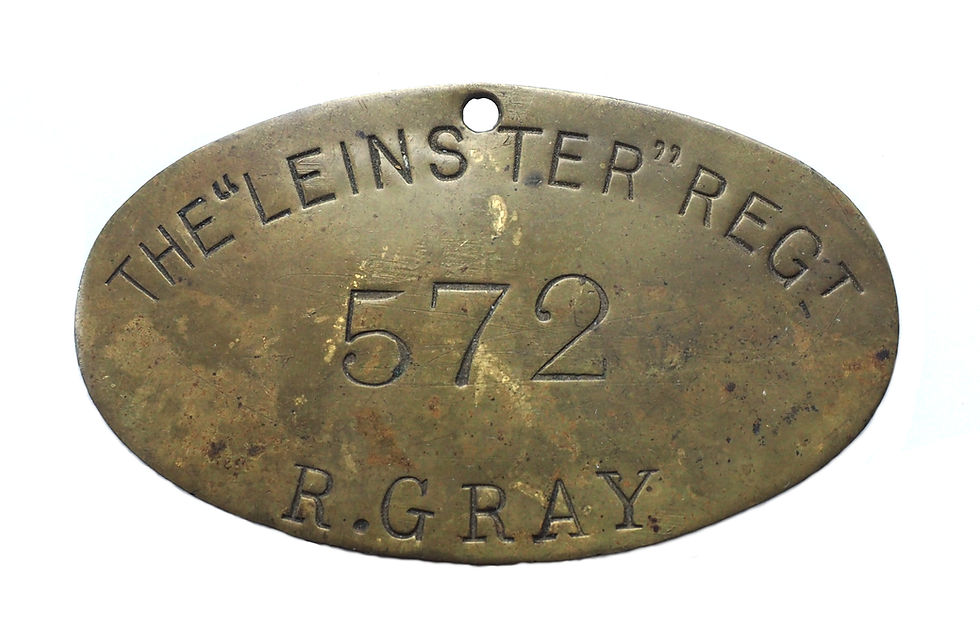A Sergeant's Bed Plate - Richard Gray
- Stephen Callaghan
- Nov 20, 2021
- 2 min read

Bed plates are small pieces of brass metal with the name, number and regiment of the soldier they belong to. They would be hung at the end of their bed, the plate would be reversed if the soldier was on duty, hence explaining a soldier's absence.
This example was used by Richard Gray of the Leinster Regiment. Richard was born on 3 December 1865 in the Parish of Ahern, Fermoy, County Cork. He was the son of Constable William Gray and Ellen Gray (née Walsh).
Richard attested for service with the Leinster Regiment at Dublin on 23 August 1884. He joined the regiment at Birr on 27 August. He listed his profession as a teacher. His service papers describe him as 5 foot 10 inches tall, having light grey eyes and brown hair.

Private Gray was initially posted to the Depot, Leinster Regiment, but was soon posted to the 2nd Battalion, then 1st Battalion. He was with the battalion in India in the early 1890s where he had his photograph taken along with most of the other sergeants in the battalion. In 1895 he was posted to the 5th (Militia) Battalion in Navan, County Meath, where he reengaged for service to complete 21 years with the colours. Whilst based in Navan, he married Alice Edith Slade at St Mary’s Church on 16 September 1896.
While posted with the depot in 1899 he was tried by district court martial for being drunk on duty and was reduced in rank to Private and forfeited his good conduct pay. This incident would have barred Gray from receiving the Long Service & Good Conduct medal, upon his completion of 18 years service.
Private Gray served in South Africa during the Anglo Boer War with the 1st Battalion, and for his service received the Queen’s and King’s South Africa medals. He returned home in September 1902 and remained on home service until he was discharged at Snorncliffe, Kent on 22 August 1905. His intended place of residence was Military Avenue, Cheriton Kent.
On 11 August 1914, Richard attested for home service in the 8th Battalion, Royal West Kent Regiment. His attestation papers record he had 5 children. On 4 February 1915 he cancelled his ‘home service only’ condition for ‘general service’, and was subsequently sent to France in August 1915.
In September 1917 Sergeant Gray transferred to the Labour Corps where he was promoted to Company Quartermaster Sergeant. He was discharged in December 1918 having being found no longer fit for service, after sustaining a sprained ankle. His service in the Great War entitled him to a 1915 Star, British War Medal, Victory Medal and Silver War Badge.
Upon Richard’s final discharge from the army, his character was described as ‘good’, and his place of residence was given as Ivy Dene, Greenstreet Green, Kent, England. The 1939 Register lists Richard as a retired civil servant and army pensioner. Richard died 23 January 1940 at Farmborugh Hospital, aged 74 years.




Great read, Richard saw great service
Thanks Irene!
Fascinating read.... Great way to keep the memory of these men alive. Irene